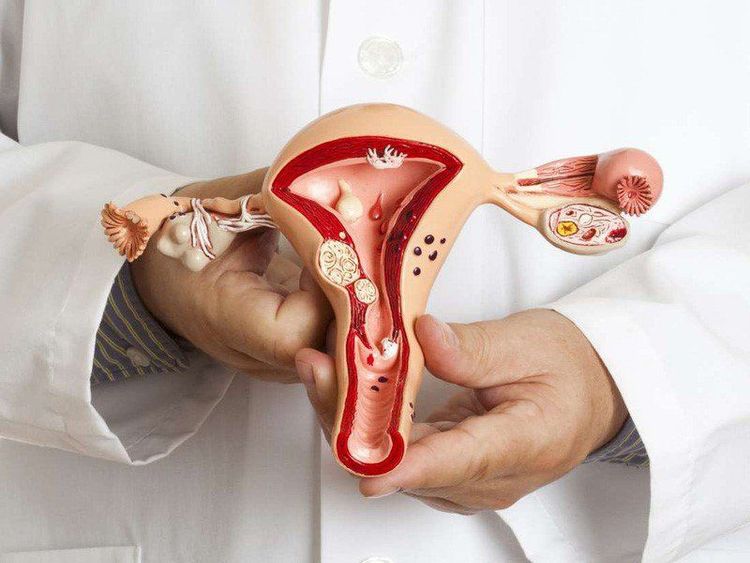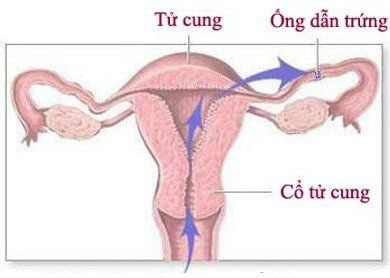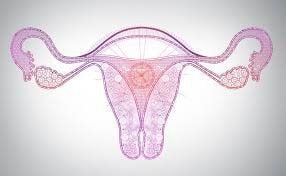This is an automatically translated article.
The article was professionally consulted by a doctor from the Department of Obstetrics and Gynecology - Vinmec Central Park International General HospitalFallopian tubes or fallopian tubes are an important part of the female reproductive system. These are two long, narrow tubes located in a woman's abdominal cavity. Many women do not understand what fallopian tubes are? How many centimeters long are the fallopian tubes? Knowing the structure and function of the fallopian tubes will help women have the most effective reproductive health care!
1. What are fallopian tubes?
Fallopian tubes originate from the bottom of the uterus. A normal female reproductive organ will have 2 fallopian tubes, hollow and open to the uterus. The last part of the fallopian tube are small tentacles located right next to the ovary whose main function is to support the release of a mature egg. This is also where the fertilized egg and sperm then travel back to the uterus to implant and develop.Unlike sperm, eggs will not be able to move on their own. After fertilization, the egg will be moved by the cilia in the fallopian tube to the uterus. Therefore, if the fallopian tube is infected, it will easily leave scars, affecting the movement of eggs and sperm.
If not treated promptly, it can cause fallopian tube blockage, infertility, infertility in women. In case the fertilized egg cannot move to the uterus for implantation, it will lead to an ectopic pregnancy, which is very dangerous to health.

Cấu tạo ống dẫn trứng ở nữ giới
2. How many centimeters long are the fallopian tubes?
Fallopian tube or fallopian tube is a muscular tube with a length of 9-12 cm. One end of the fallopian tube will connect to the uterus, the other end will connect to the abdomen to "catch" the egg. The structure of the fallopian tube consists of the following main parts: the funnel near the ovary, the tube bulge, and the isthmus.
3. Common diseases in the fallopian tubes
Tubal diseases account for 20% of the causes of infertility in women. In particular, in severe cases, women are forced to remove both fallopian tubes and lose the ability to conceive naturally. Here are the common problems in the fallopian tubes that women need to be aware of.3.1 Fallopian tube stasis This is a common complication caused by improper treatment of gynecological diseases such as: vaginitis, salpingitis, pelvic inflammatory disease, gonorrhea, tubal adhesions...
Main manifestations of tubal stasis are: severe abdominal pain, menstrual disorders, pain during sex... When these symptoms appear, women need to see a doctor immediately for treatment as soon as possible. Then, depending on the degree of water retention and damage to the fallopian tubes, the doctor will have specific indications. Fallopian tube stasis, if not treated promptly and properly, can cause dangerous complications such as tubal blockage, infertility, infertility...

Ứ nước vòi trứng nếu không được chữa trị kịp thời và đúng cách có thể gây ra những biến chứng nguy hiểm
3.2 Obstruction of Fallopian tubes The fallopian tubes act as a bridge between the sperm and the egg and help the fertilized egg move to the uterus for implantation. Therefore, if the fallopian tubes are infected, the blockage will prevent the egg and sperm from meeting or the fertilized egg cannot move to implant in the uterus.
Blocked fallopian tubes are the leading cause of infertility, difficulty conceiving or ectopic pregnancy in women. The most common signs of blocked fallopian tubes are: Lower abdominal pain, irregular menstruation...
Blocked fallopian tubes are often caused by unsafe sex, not clean hygiene, especially During the "red light" period, abortion is not safe...
At that time, bacteria can enter the vagina, uterus and even infect the fallopian tubes.
Women who miscarry, give birth, have multiple abortions are also susceptible to fallopian tube infections. In this case, bacteria can spread from the vagina to the uterus and fallopian tubes, causing inflammation and blockage of the fallopian tubes.
4. Methods of treating fallopian tube infections
Currently, there are many methods to treat urinary tract infections. Depending on the severity of the disease, the doctor will prescribe the most suitable treatment method.
Viêm tắc ống dẫn trứng có thể gây biến chứng nguy hiểm nếu không được chữa trị kịp thời
For cases where the fallopian tubes are completely blocked, the doctor may prescribe cauterization or removal of the fallopian tubes to reduce the risk of ectopic pregnancy. If you have to have your fallopian tubes removed, you may want to consider IVF.
5. Measures to prevent diseases related to fallopian tubes
The condition of the fallopian tubes will directly affect a woman's fertility. When you notice abnormal signs, you need to go to a reputable medical facility for timely treatment. In addition, women also need to pay attention to prevent diseases related to the fallopian tubes by the following measures:
Safe sex, faithfulness. Clean the intimate area clean, especially during the days of menstruation, before and after sex. Do not abuse feminine hygiene solutions with strong antiseptic properties. Gynecological examination every 6 months to detect potential risks and treat the disease most effectively. Vinmec International General Hospital has successfully treated many women with fallopian tube problems. If you have any questions, please contact the experts immediately to get the most timely answers. Hopefully, through the above article, you will know how to take care and protect reproductive health effectively.
Please dial HOTLINE for more information or register for an appointment HERE. Download MyVinmec app to make appointments faster and to manage your bookings easily.













